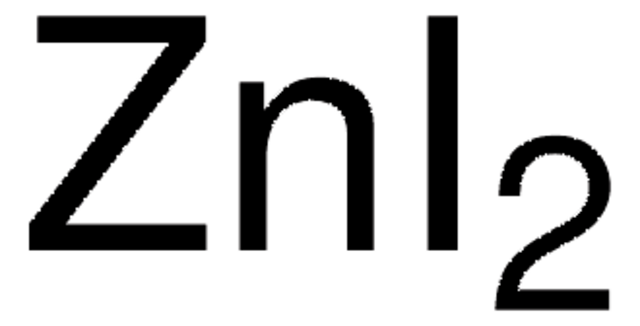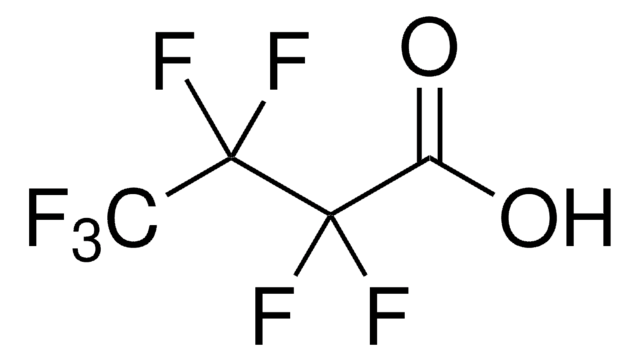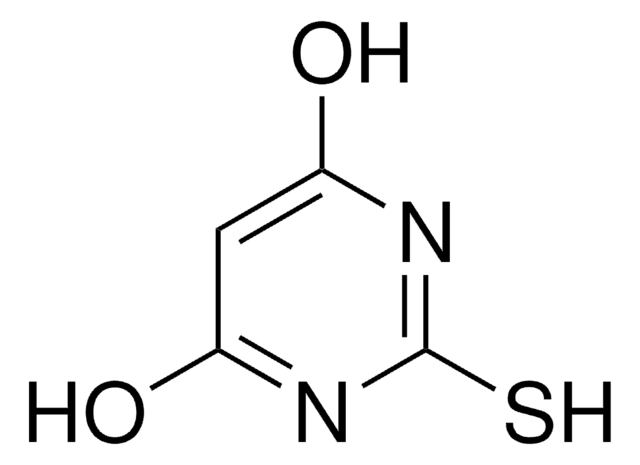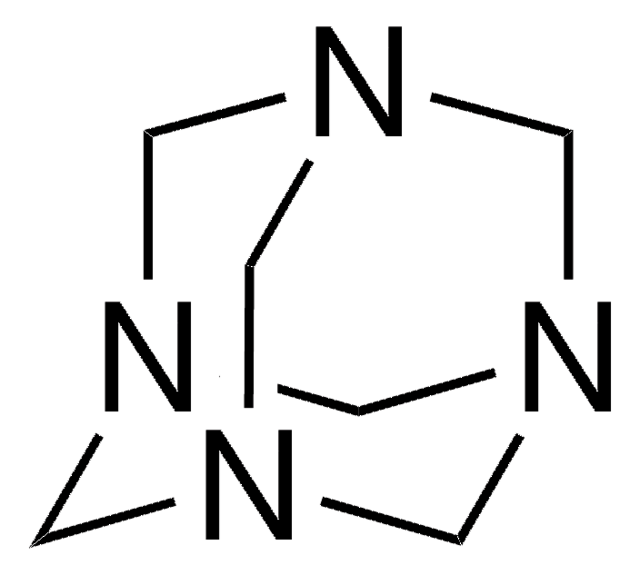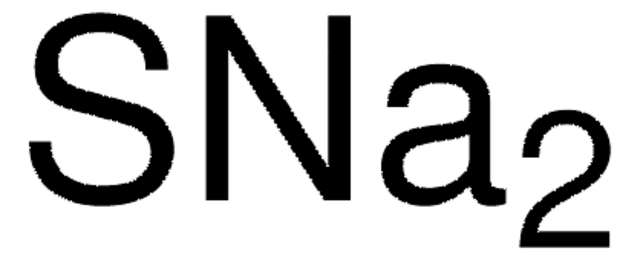96483
Zinc iodide
purum p.a., ≥98.0% (AT)
Sinónimos:
Diiodozinc, Zinc diiodide
About This Item
Productos recomendados
grade
purum p.a.
assay
≥98.0% (AT)
form
powder or crystals
mp
445 °C (lit.)
density
4.74 g/mL at 25 °C (lit.)
anion traces
sulfate (SO42-): ≤500 mg/kg
cation traces
Ca: ≤500 mg/kg
Cd: ≤200 mg/kg
Co: ≤50 mg/kg
Cu: ≤50 mg/kg
Fe: ≤100 mg/kg
K: ≤500 mg/kg
Na: ≤500 mg/kg
Ni: ≤50 mg/kg
Pb: ≤50 mg/kg
SMILES string
I[Zn]I
InChI
1S/2HI.Zn/h2*1H;/q;;+2/p-2
InChI key
UAYWVJHJZHQCIE-UHFFFAOYSA-L
¿Está buscando productos similares? Visita Guía de comparación de productos
Categorías relacionadas
General description
Application
- As a catalyst for one-pot synthesis of aminoindolizines via sequential A3 coupling/cycloisomerization.
- As a catalyst for one-pot synthesis of quinoxalines.
- As a precursor to synthesize highly luminescent quantum dots.
- As a redox electrolyte in hybrid energy storage systems.
- As a dopant to prepare highly flexible PVA composite films. The addition of zinc iodide enhances the optoelectronic properties of polymer composite.
signalword
Warning
hcodes
Hazard Classifications
Aquatic Acute 1 - Aquatic Chronic 1 - Eye Irrit. 2 - Skin Irrit. 2 - STOT RE 2 Oral
target_organs
Thyroid
Storage Class
13 - Non Combustible Solids
wgk_germany
WGK 3
flash_point_f
Not applicable
flash_point_c
Not applicable
ppe
Eyeshields, Faceshields, Gloves, type P3 (EN 143) respirator cartridges
Certificados de análisis (COA)
Busque Certificados de análisis (COA) introduciendo el número de lote del producto. Los números de lote se encuentran en la etiqueta del producto después de las palabras «Lot» o «Batch»
¿Ya tiene este producto?
Encuentre la documentación para los productos que ha comprado recientemente en la Biblioteca de documentos.
Nuestro equipo de científicos tiene experiencia en todas las áreas de investigación: Ciencias de la vida, Ciencia de los materiales, Síntesis química, Cromatografía, Analítica y muchas otras.
Póngase en contacto con el Servicio técnico